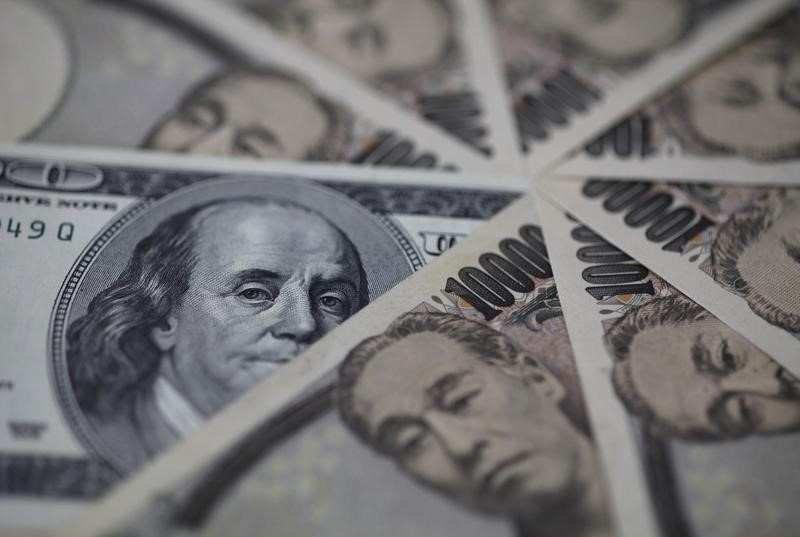Verizon to cut 15,000 jobs amid growing competition pressures - WSJ
Investing.com-- Most Asian currencies moved in a tight range on Thursday, with the yen flitting around levels known to attract government intervention, while the U.S. dollar steadied as lawmakers ended a long-running government shutdown.
The Australian dollar firmed past its peers after stronger-than-expected employment data dampened expectations for more interest rate cuts by the Reserve Bank. The AUD/USD pair rose 0.2%.
Broader Asian currencies kept to a tight range. The Chinese yuan’s USD/CNY pair fell 0.1% after a strong midpoint fix from the People’s Bank.
The South Korean won’s USD/KRW pair recovered mildly from its highest levels in seven months while the Singapore dollar’s USD/SGD and Taiwan dollar’s USD/TWD both moved little.
The Indian rupee’s USD/INR pair rose 0.1% after consumer inflation data read much weaker than expected for October, raising bets on more interest rate cuts by the Reserve Bank of India.
Japanese yen nears intervention levels, hits record low against euro
The Japanese yen’s USD/JPY pair rose slightly on Thursday, briefly breaking above 155 yen for the first time in nearly 10 months. The Japanese currency also hit its weakest level ever against the euro, amid an increasingly bearish outlook for the currency.
The 155 yen level has attracted intervention by the Japanese government in currency markets in the past, with traders now waiting to see whether Prime Minister Sanae Takaichi’s administration will do so.
Bank of Japan Governor Kazuo Ueda struck a dovish tone on Thursday, stating that the central bank was aiming at moderate inflation with wage rises and economic growth.
Comments from Finance Minister Satsuki Katayama also reiterated the Takaichi administration’s stance that it was premature for the BOJ to hike rates, with inflation still seen below the central bank’s 2% annual target.
Dollar steady as US shutdown ends; econ. data awaited
The dollar index and dollar index futures kept to a tight range in Asian trade, after President Donald Trump signed a bill to unlock funding and end the longest ever U.S. government shutdown.
Trump signed the measure after the House of Representatives approved the bill in a slim majority.
The end of the shutdown comes just hours before the shutdown entered its 43rd day, with traders now seeking to gauge its economic impact.
The government’s reopening now opens the door for the release of official economic data on the United States, with readings for October and November expected to reflect the shutdown’s impact.
Trump on Wednesday claimed the shutdown cost the economy $1.5 trillion.
